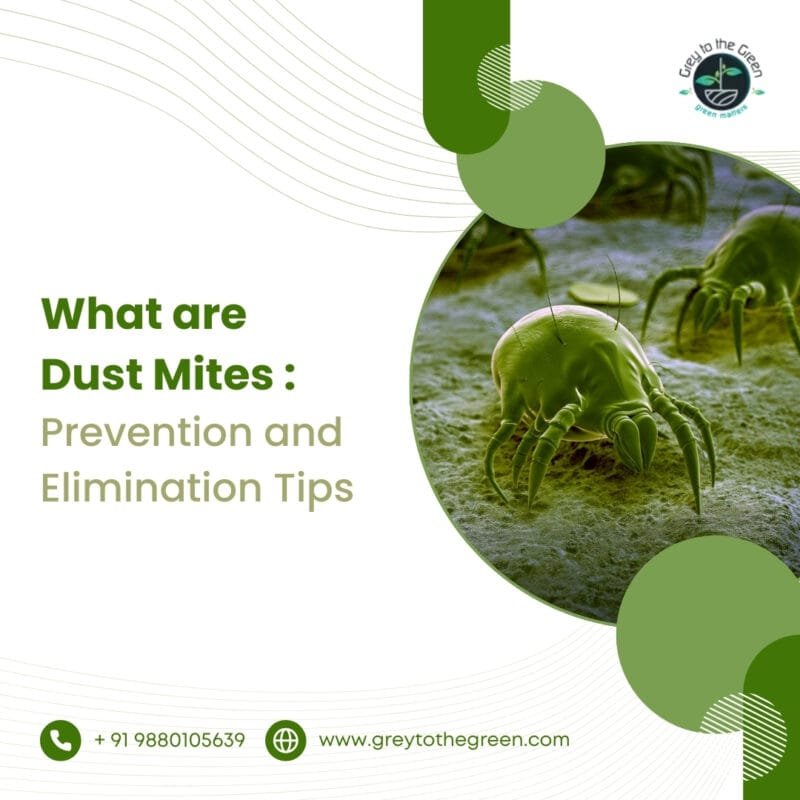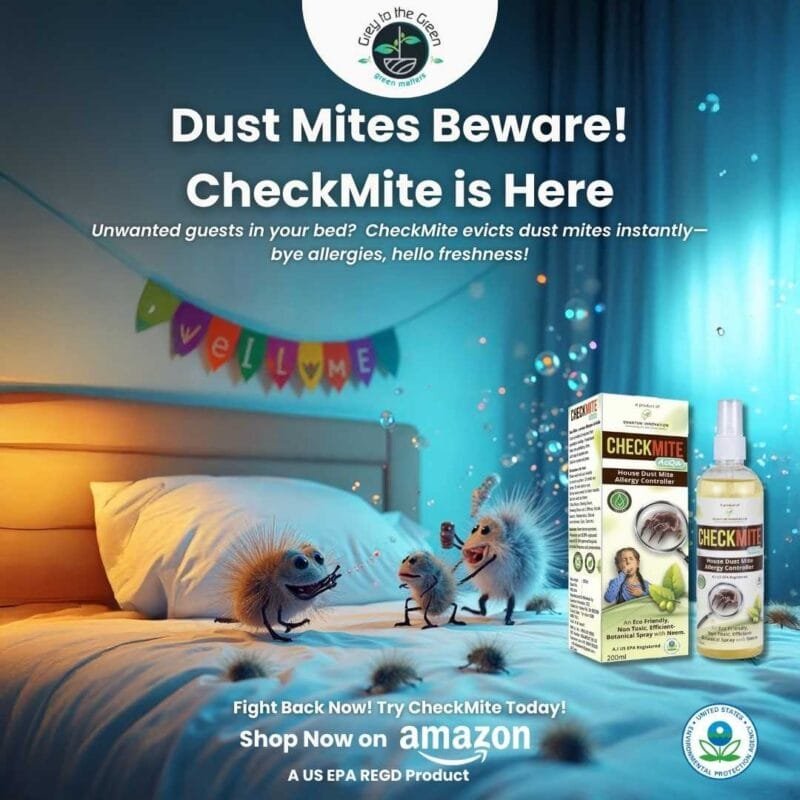In the battle against pesky insects, it’s essential to consider the safety and effectiveness of the tools we use. This comparison explores the world of pest control, focusing on the clash between Bugster and traditional chemical insecticides. While chemical insecticides have long been the go-to solution for eliminating pests, they often raise concerns about the chemicals they contain and their environmental impact. Bugster, on the other hand, offers a more natural and eco-friendly approach to pest control. In this examination of Bugster vs. Chemical Insecticides, we’ll delve into the ingredients and mechanisms behind both methods, weighing their safety and effectiveness, all while keeping sustainability in mind. To make an informed choice for a greener pest control solution, continue reading at https://greytothegreen.com/
The intrusion of pests is a common household woe, leading to a host of problems. From contaminating our food supplies and causing damage to our homes to spreading diseases, these unwanted guests are more than just a nuisance. Effective pest control methods are essential to combat these issues. Traditional chemical insecticides have been the default choice, but they raise concerns due to the harmful chemicals they contain and their impact on the environment. Bugster provides an alternative approach, focusing on natural and sustainable solutions. In this comparison of Bugster vs. Chemical Insecticides, we assess these methods for safety and effectiveness, ensuring a greener, cleaner, and more pest-free future.
Understanding Chemical Insecticides
| TYPES OF INSECTICIDES | HOW IT WORKS | SAFETY CONCERNS |
| Pyrethroids | A synthetic version of pyrethrins, these chemicals attack an insect’s nervous system, paralyzing and killing them. | Potential harm to humans, pets, and beneficial insects. Resistance development in pests. |
| Organophosphates | These chemicals inhibit an enzyme necessary for nerve signal transmission, causing paralysis and death in insects. | High toxicity to humans, pets, and wildlife. Soil and water contamination. |
| Neonicotinoids | They disrupt an insect’s nervous system, leading to paralysis and death. | Harmful to pollinators (bees) and aquatic life. Residues in food. |
| Carbamates | These chemicals block an enzyme, preventing nerve signals and causing insect paralysis and death. | Toxic to humans and wildlife. Limited environmental persistence. |
This table provides an overview of the different types of traditional chemical insecticides, their mechanisms of action, and safety concerns associated with their use.
Introducing Bugster

Bugster presents itself as a compelling eco-friendly alternative for pest control in the Bugster vs. Chemical Insecticides debate. Unlike traditional chemical insecticides, which often contain harmful substances, Bugster utilizes safe and sustainable methods to manage pest problems effectively. By employing nature-based ingredients and innovative technology, Bugster minimizes the need for toxic chemicals in pest control, reducing the associated health and environmental risks. This approach aligns with the growing awareness of the dangers of chemical insecticides, promoting a more sustainable and eco-friendly way of addressing pest-related issues. Their initiative has also elevated the economic well-being of the Tribals in India. To learn more and make the switch to a safer pest control solution, visit Grey to the Green.
Bugster harnesses the power of natural ingredients and eco-friendly mechanisms to repel pests effectively. Key components include plant extracts, essential oils, and innovative technology like ultrasonic devices. These ingredients and mechanisms work together to deter pests while ensuring safety for humans, pets, and the environment. Bugster’s eco-friendly approach provides a sustainable alternative to traditional chemical insecticides.
Safety and Health Considerations
| ASPECT | BUGSTER | CHEMICAL INSECTICIDES |
| Human Safety | Safe for humans,non-toxic, no harmful chemicals | May contain harmful chemicals and pose a risk to human health |
| Pet Safety | Pet-friendly, no harmful effects | Often contain toxins, harmful if ingested |
| Environmental Impact | Environmentally friendly, low environmental impact | Can lead to soil and water pollution, harming ecosystems |
Bugster stands out for its safety, being non-toxic to humans and pets, while also having a low impact on the environment. In contrast, chemical insecticides often contain harmful chemicals that can pose risks to health and the ecosystem.
Effectiveness in Pest Control
Bugster has shown remarkable effectiveness in repelling and controlling pests. Using a unique blend of natural ingredients and innovative mechanisms, Bugster offers a safe and eco-friendly alternative to chemical insecticides. Its ability to repel pests while being harmless to humans, pets, and the environment is a testament to its effectiveness. Bugster has gained recognition for its sustainable and efficient approach to pest control, making it a preferred choice for those seeking to manage pest issues without resorting to chemical-based solutions.
Chemical insecticides are known for their immediate and potent impact on pest eradication. These products contain synthetic chemicals designed to kill or repel pests effectively. While they can be efficient in eliminating pests, they come with potential health and environmental concerns due to the harsh chemicals involved. Furthermore, some pests have developed resistance to certain chemicals over time. Bugster, on the other hand, presents a safer and environmentally friendly option, offering effective pest control with natural ingredients and without the adverse effects associated with chemical insecticides.
Environmental Impact
Ecological Effects of Bugster:
- Biodegradability: Bugster is biodegradable and breaks down naturally, reducing long-term environmental impact.
- Non-toxic to Beneficial Organisms: Bugster is harmless to beneficial insects like bees and ladybugs, supporting ecological balance.
- Preservation of Soil Health: Bugster maintains soil health by not introducing harmful chemicals.
- Reduced Runoff Pollution: Bugster doesn’t contribute to water pollution as it doesn’t contain synthetic chemicals.
- Protection of Aquatic Ecosystems: Bugster’s eco-friendly formula doesn’t harm aquatic life when it enters water bodies.
Ecological Effects of Chemical Pesticides:
- Toxic Residues: Chemical pesticides leave toxic residues in the environment, affecting non-target organisms.
- Pollution of Soil and Water: Runoff from chemical pesticides can contaminate soil and water, harming ecosystems.
- Non-selective Nature: Chemical pesticides often harm beneficial insects and disrupt ecological balances.
- Pesticide Resistance: Repeated use of chemical pesticides can lead to pest resistance, requiring stronger chemicals.
- Impact on Aquatic Life: Chemical pesticides can be highly toxic to aquatic organisms when they enter water bodies.
Cost Analysis
Cost-Effectiveness Comparison: Bugster vs. Chemical Insecticides
Bugster and chemical insecticides differ significantly in cost-effectiveness:
Bugster:
- Upfront Cost: Bugster may have a slightly higher initial cost due to its natural ingredients and innovative formula.
- Long-Term Savings: Bugster offers long-term savings by reducing the need for frequent pest control treatments, as it effectively repels pests.
- Reduced Health Costs: Bugster’s safety benefits can result in lower healthcare costs by reducing pesticide-related health issues.
Chemical Insecticides:
- Lower Initial Cost: Chemical insecticides are often cheaper upfront due to mass production and lower manufacturing costs.
- Frequent Applications: Chemical insecticides may require more frequent applications, leading to higher long-term expenses.
- Health Costs: The health and environmental risks associated with chemical pesticides can lead to increased healthcare and environmental cleanup costs.
In the long run, Bugster’s initial cost can be outweighed by the savings and health benefits it offers, making it a cost-effective choice for pest control.
Making an Informed Choice
When it comes to pest control, the choice between Bugster and chemical insecticides should be based on your priorities and values. If you prioritize safety, environmental consciousness, and long-term cost-effectiveness, Bugster is the ideal choice. Its eco-friendly ingredients and reduced health risks set it apart.
However, if upfront costs and immediate results are your main concerns, traditional chemical insecticides might be more appealing. It’s essential to assess your individual needs, budget, and environmental responsibility. Making an informed choice will lead to effective pest control that aligns with your values. Embrace the method that best suits your priorities, ensuring a pest-free, safe, and eco-conscious living environment.
Conclusion
Bugster, an eco-friendly alternative, stands in stark contrast to chemical insecticides. While chemicals may provide immediate results, they come at a significant cost to safety and the environment. Bugster utilizes natural ingredients to effectively repel pests without harming humans, pets, or the planet. By choosing Bugster, you prioritize safety, environmental responsibility, and cost-effectiveness in the long run. To make a smarter, greener choice for pest control, visit greytothegreen.com and discover a safer and eco-conscious way to protect your home. Make the switch today!














